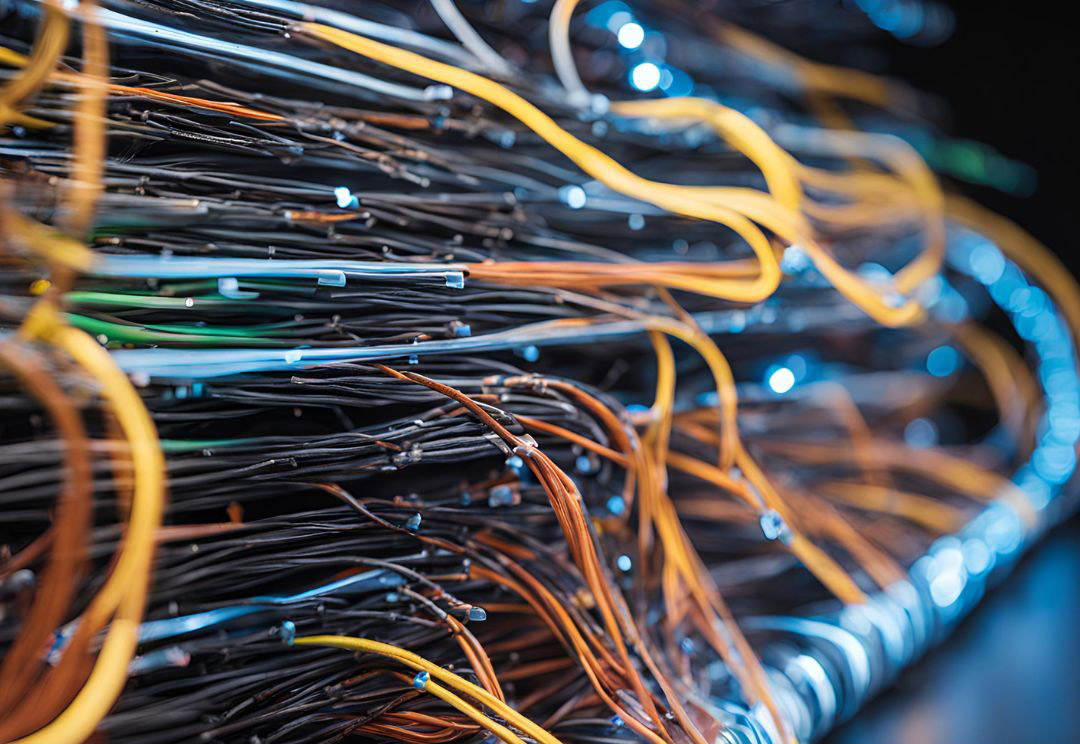Optical Communications and Systems Networking Workshop
5 DAYS
INSTRUCTOR LED WORKSHOP
“OUR COURSES CAN BE SPECIALLY TAILORED TO ADDRESS YOUR REQUIREMENT – TELECONTRAN”

COURSE OBJECTIVES
The major driving force behind the widespread use of fiber optics communication is the high and rapidly increasing consumer and commercial demand for more telecommunication capacity and internet services. Advances in technology have enabled more data to be conveyed through a single optical fiber over long distances.
With the advancement of the Telecom network towards 4G, 4.5G, 5G, even upcoming 6G, High Speed data transmission is mandatory which can be provided by Optical Transmission. The day is not far when Fiber optic will be the only backbone for all transmission system.
Telecontran offers this 5-day workshop on Optical Communication and Systems Networking that covers an overview of the SDH and DWDM networking elements and their technologies along with a comprehensive business and technical foundation in optical networks, services and applications development as well as different Optical Transmission Network systems such as OTN, GPON, FTTx, Metro Ethernet etc.
After successful completion of this course participants will be able to:
- Understand the market trends and development for fiber optics which is now encroaching into many aspects of our day to day uses.
- Gain a comprehensive technical foundation in optical networking and its services and applications development
- Explore SDH and DWDM Architectures & Services
- Make informative decisions on cable design and alternative construction for various environments
- Understand OTN and how it impacts on modern telecommunications
- Learn about FTTx and necessary loss budgets along with the safety margins.
COURSE CURRICULUM
This course is specially designed for Telecom Engineers, Design engineers, Transmission engineers, Technicians, Fiber layout staffs, Managers, Project team members, Planners, in fact, anyone who is involved in design, configuration, installation, testing, troubleshooting of fiber optic system.

Module 1: Introduction of Fiber optics
- Optical fiber structure analysis.
- Major advantages of fiber optic technology.
- Symbols and notations used in optical communication.
- Applications and future trends of fiber optics.
- Classification of optical fiber and optical fiber cables.
- Signal losses in fiber optics.
- Basic Fiber Optic Terminology
- Three Critical Considerations
- Optical Fiber Transmission System
- Fiber Optic Standards
- Fiber Comparison
- Typical Transmission Rates
- System Topologies
- Advantages and Disadvantages of Fiber Optics
Module 2: Basics Components Used in Network Designing of Fiber Optics
- Fiber Characteristics and Specifications
- Multimode Fiber Types
- Multimode Fiber Bandwidth
- Single-mode Fiber Types
- Dispersion-compensating Fiber
- Fiber Optic Color Coding
- Application Areas of Optical Fiber
- Main Connector Components
- Multifiber Connectors
- DWDM Influenced Single-mode Connectors
- Termination Techniques
- Fiber Optic Connector Inspection
- Single-mode Field Connector Issues
- Attenuators
- Terminators
Module 3: Optical Fiber Cable Installation and Restoration
- How the optical fiber cable installation can be categorized in different types
- ITU-T Standard Optical fiber cable installation guidelines.
- How to handle cable during duct direct buried installations
- Methodologies to establish fiber optic cable spans in the field.
- Cable restoration techniques and typical causes of cable failures.
- Equipment and tools used in restoration.
- What are the important safety concerns in optical fiber handling
Module 4: Jointing Splicing & Connectors
- Methods used for jointing optical fibers
- Why do we need splicing
- What are the requirements of a good splicing
- What issues affect Splicing Performance
- Splicing techniques (Fusion & Mechanical) and their features.
- Mechanical splicing process and commonly used types.
- Ideal connector features and techniques used in connectors.
- Commonly used connectors and their assembly processes.
- Connectors vs splicing comparison.
- Splices protection techniques.
- Fiber Cleaving
- Common Fiber Optic Cleavers
- Fusion Splicing
- Ribbon Splicing
- Mechanical Splicing
- Pigtail Splicing
Module 5: Design of Network, Installation & Safety Guidelines
- Installation
- Optical Cable Installation
- Cable Handling
- Guidelines for Fiber Optic Cable Installation
- Standards, Regulations, and Codes
- Air Blown Fiber
- Cabling Buildings
- Cable Trays and Cable Duct Benefits
- Cable Installation Products
- Fiber Optic Safety Concerns
- Visual Safety Using Fiber Optic Sources
- Wavelength and the Eye
- Laser Classifications
- Working with Lasers
- Safety Eyewear
- Working with Optical Fibers
- Safety Data Sheets (SDS)
- Installation Practices
Module 6: Network Design Fundamentals of Fiber Optics
- Loss Budgets
- Loss Budget Basics
- Design Options for Fiber Optic Networks
- Safety Margin
- Multimode System Budgets
- Multimode Wavelength Optimization
- 10/40/100 Gigabit Networks
- Loss Budgets for FTTx Networks
- PON Architectures
- Cable Management Products
- Test Equipment Selection
- Placement Technique
- Fiber Installation Inspection Report
- Splice Loss Record
- Multiple bonding methods
- Visual inspection / cleaning
- Acceptance testing
- Reflection testing
- Optical Loss Testing
- Link loss measurement
- Transmit and receive power
- Reflection testing
Module 7: Optical Fiber Systems in Telecom Networks
- OFS in Backbone
- OFS in Metro Network
- OFS in Access Network
- Optical Fiber Networks
- Network Topologies
- Pros and Cons of Networking Topologies
- Protection Mechanisms in OF Networks
Module 8: Introduction to OFS
- PDH
- SDH
- WDM/CWDM/DWDM
- OTN
- GPON
- Ethernet and Metro Ethernet
Module 9: SDH-Synchronous Digital Hierarchy
- Benefits of SDH Vs PDH
- Synchronous Transport Module-STM
- STM Header
- Composition of STM frame with E1, E3 and E4
- Payload and Overheads
- Regenerator Section Overhead-RSOH
- Multiplex Section Overhead-MSOH
- Path Overhead-POH (HO-POH & LO-POH)
- Add Drop Multiplexer-ADM
Module 10: WDM/CWDM/DWDM
- Why WDM? (Benefits and complexities)
- Passive optical components
- Optical Filters
- Fiber types for DWDM
- Lasers and spectral width
- OADM
- Optical Line Amplifier-OLA
Module 11: Optical Transport Network-OTN
- Why OTN?
- OTN Hierarchy
- OTU, ODU, OPU and client signal
- FEC and coding gain
Module 12: Metro Ethernet
- Ethernet
- Metro Ethernet Basics
- Benefits of Metro Ethernet
- Metro Ethernet Services
- EVC
- E-Line
- E-LAN
- E-Tree
- Mobile Backhauling
Module 13: FTTx and GPON
- Fiber cable in Access
- FTTx architecture
- FTTx Services
- OLT and GPON
- Optical Distribution Network-ODN
- Types of cable in different segments of ODN
- Underground and Overhead ODN
TRAINING/WORKSHOP | DURATION | TRAINING DATE | LOCATION |
Optical Communications and Systems Networking Workshop | 5 Days |
OUR HAPPY CLIENTS
WHAT OUR CLIENTS SAY ABOUT TELECONTRAN !!
The trainer’s explanation is clear and the presentation layout specially on Fiber Network Design, Fiber installation guideline, Fiber installation and maintenance tool is outstanding.
The whole workshop was very informative and well presented with good emphasis on OLT, ONU, Splitter and Fiber Optics.
This course gives an overall picture on the function of GPON and FTTx network, power calculation and management and fault finding and analysis in GPON system.
The course was packed with information on Fiber Networking and its planning, design, GPON Networking and FTTx Scenarios.
This workshop enhanced my knowledge in optical Fiber, multiple test equipment used in Cabling, light movement inside the core.

